Inside: Use these kindergarten writing assessments to create a Show How You Grow book to monitor fine motor and writing development across the year.
Kindergarten Writing Assessments That Show Progress Over Time
Finding kindergarten writing assessments for young children, who are just beginning to put pencil to paper, can be tricky.
Many years ago, I was advised by a veteran teacher to collect samples of children’s work to share with parents at conference time. What I collected were random samples of writing and artwork that provided a picture of the child’s development in the moment, but failed to show progress over time.
I remember sharing tissue paper apples and random writing pieces with families and not really being clear about what they represented or why I was sharing them.
In later years, I became more intentional about the kindergarten writing assessments and work samples I chose, making sure they demonstrated targeted skills, and repeated them at key points in the year to show each child’s progress and development throughout kindergarten.
I combined these writing sample pages into what we now call our Show How You Grow books.
These books include 8 kindergarten drawing and writing assessments that we administer 3x a year (autumn, winter, spring) to give us really helpful snapshots of children’s fine motor and writing development across the kindergarten year.
Here’s what’s included in each book.
Yearlong Kindergarten Writing Assessments
Name Writing and “Me” Drawing
This is a great first week of school activity, once I’ve introduced pencils and crayons. Children give me their first sample of name writing and draw a picture of themselves. I take pictures as they work to document both hand dominance and pencil grip.
In the winter, after we’ve completed both our Name Writing and Drawing and Labeling units, we complete this page again to show their progress.
Coloring
As children’s fine motor skills grow throughout the year, so does their coloring and this work sample shows that growth.
Cutting and Gluing
As children complete this cutting and gluing work sample, I note their scissor grip and take pictures to document it. These pictures become helpful as I talk with parents at conferences.
Alphabet Writing
As children enter kindergarten, very few know the difference between upper and lowercase letters. So with the first sample, I just ask them to write each letter and put an X in the box if they are unsure of what that letter looks like.
But by the end of the year, as you can see from this kindergarten writing assessment, most children can now write each type of letter.
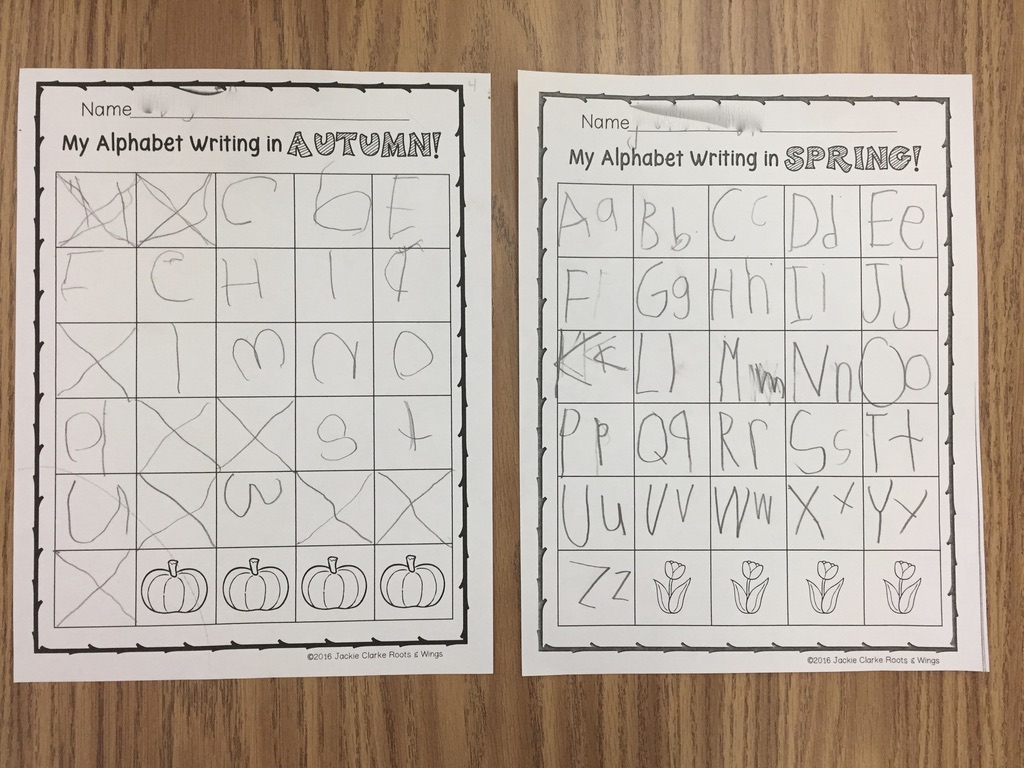
Number Writing
Similar to the alphabet writing sample, children are asked to write numbers 1-20, which is a difficult task for most children upon arriving in kindergarten. Depending upon the child or class, I sometimes limit this assessment to 1-10 in the fall, and then expand to 1-20 in winter and spring.
Dictated Word Writing
This kindergarten writing assessment includes dictating 5 CVC words to see how they are doing with their phonics, sound spelling and letter formation. Children often write just the beginning sound in the fall, beginning and ending sounds with some vowels in winter, and by spring they can write the complete CVC words.
Dictated Sentence Writing
This assessment goes one step further asking children to write a dictated sentence. The sentence is basically the same for each season, just tweaked a bit.
With this work sample, I look to see if children can write sight words, use sound spelling/phonetics, put spaces between their words, start the sentence with a capital letter and end with a period.
Seasonal Free Write
This last writing assessment is more open-ended and expands on sentence writing. Children are directed to write about the season, but nothing more specific than that. In addition to assessing all that was mentioned with sentence writing above, I’m also looking to for evidence of their ability to organize their ideas and write about a topic of their choice.
Using These Kindergarten Writing Assessments
These samples have taught me sooooo much over the years, not only about each individual child’s drawing, spelling, handwriting and overall fine motor abilities, but also about the developmental growth of a kindergarten child in these areas (something I did not know as a new K teacher!).
Having these “snapshots” of children’s work can also serve as a great alternative assessment to use alongside standardized tests and provides documentation that is more meaningful and understandable to both parents and children.
They also make a great kindergarten keepsake and can be shared with families at an end-of-year event as a way to celebrate children’s growth!
Kindergarten Writing Assessments Made Easy
To get started creating your own Show How You Grow books, print off the pages you need (both lined and lined pages included, as well as all 4 seasons) and send to your district print shop to be stapled into a book.
Now you are ready to document your children’s fine motor and writing growth for the entire school year.
The fall pages make great beginning-of-the-school-year activities to do with children as you are introducing materials such as pencils, scissors, crayons, and glue.
For more ideas on supporting beginning writers, visit the Growing Writers page inside the Roots & Wings Resource Library. Thanks for stopping by!


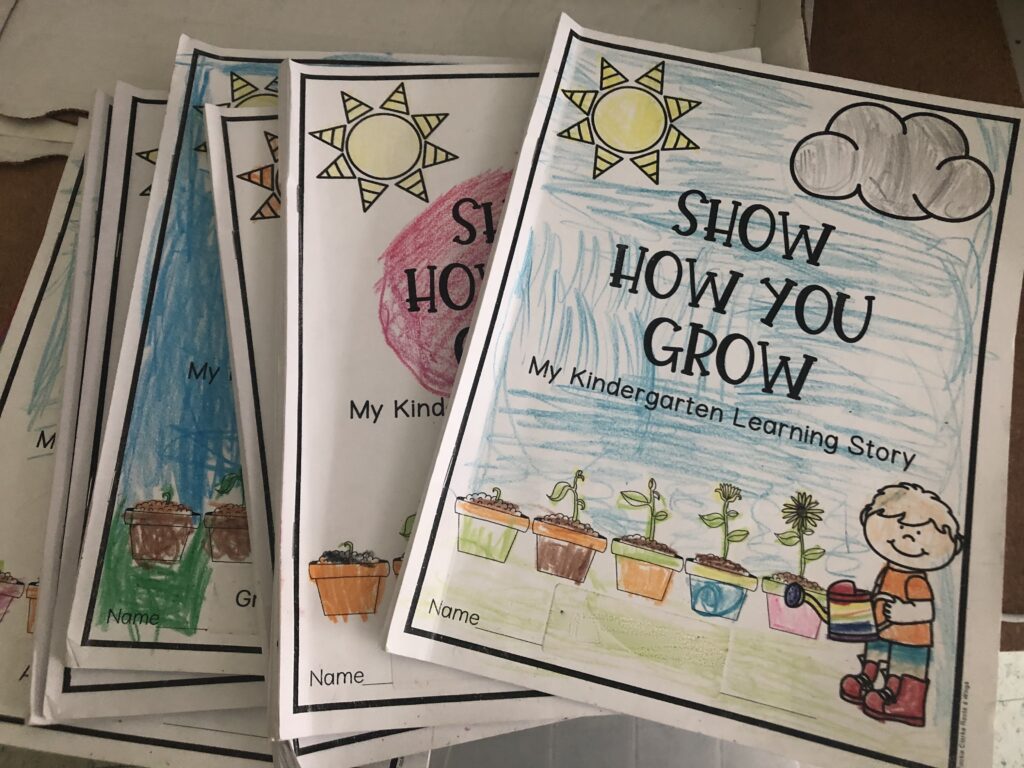
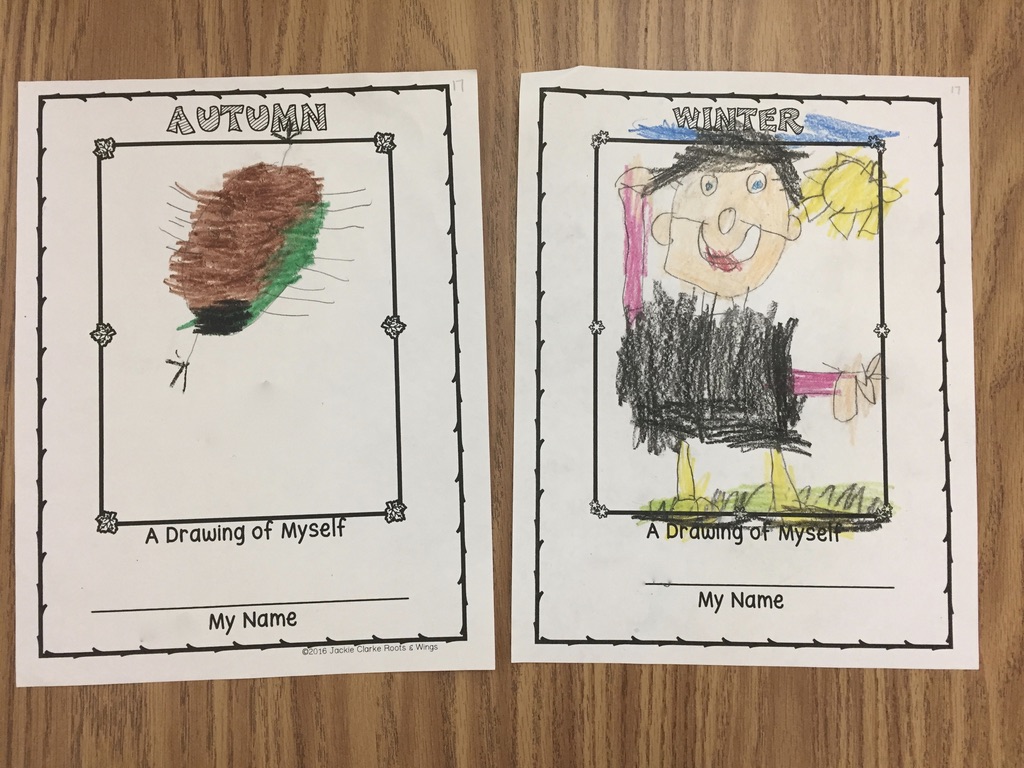



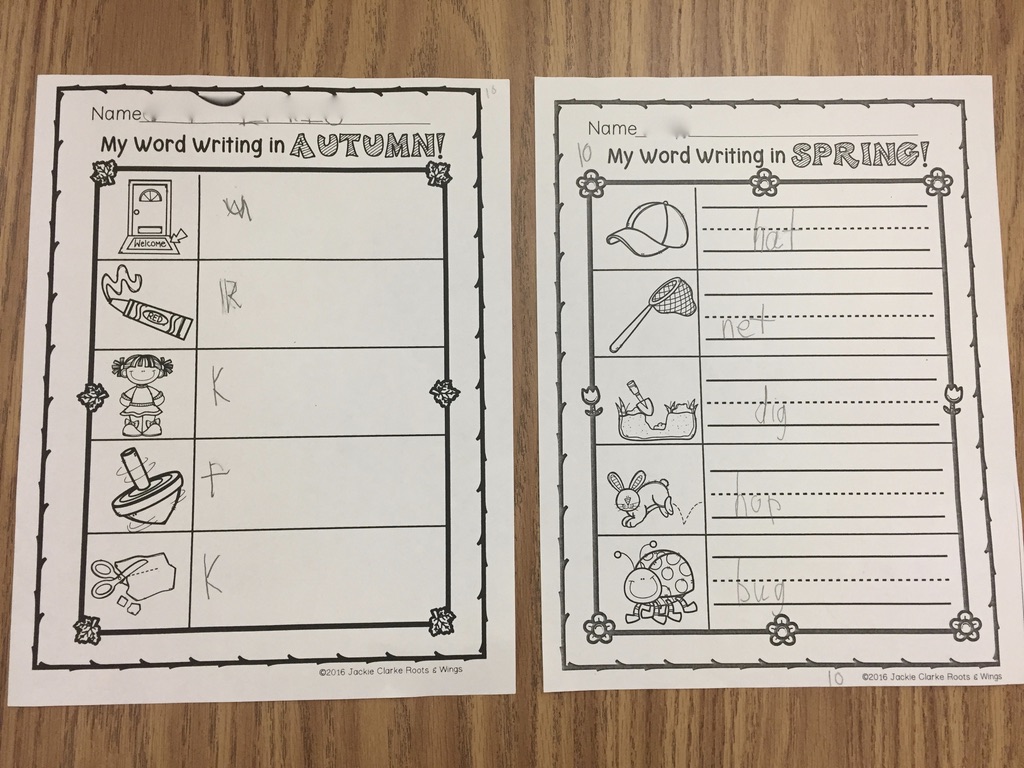



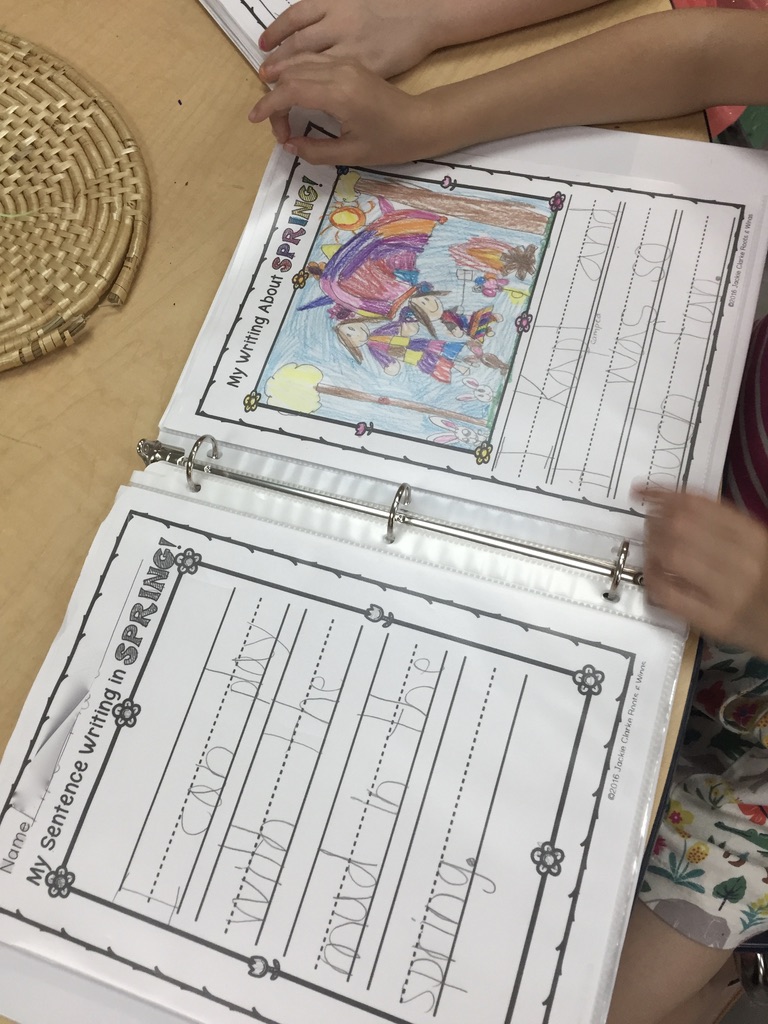

 First Days of Kindergarten: Launching Learning Blocks
First Days of Kindergarten: Launching Learning Blocks Fall Inquiries and Research Groups in Kindergarten
Fall Inquiries and Research Groups in Kindergarten Launching Choice Time Centers at the Beginning of the Year
Launching Choice Time Centers at the Beginning of the Year Our Kindergarten Friendship Feast
Our Kindergarten Friendship Feast